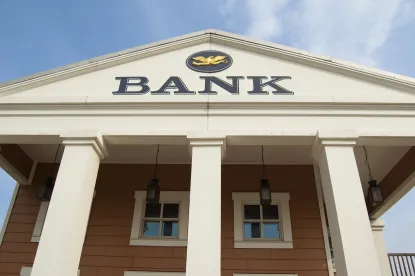Title IV of the Coronavirus Aid, Relief and Economic Security Act (CARES Act) passed by Congress on March 27, 2020 provides significant, although temporary, regulatory relief to banks, savings institutions and their customers.
The key bank regulatory relief provisions of the CARES Act are the following:
-
Grant of Authority to FDIC for Unlimited Guarantee of Transaction Accounts. Section 4008 of the CARES Act provides Congressional authorization for the FDIC to establish a temporary debt guarantee program to guarantee debt (including noninterest-bearing transaction accounts) of depository institutions and their holding companies, without a maximum amount. This provision authorizes an FDIC guarantee similar to that offered by the FDIC’s Temporary Liquidity Guarantee Program in 2008. In addition, the NCUA is given authority to temporarily increase share insurance coverage for noninterest-bearing transaction accounts. Any such FDIC or NCUA guarantee or increase in deposit insurance coverage must terminate no later than December 31, 2020.
-
Optional Delay in CECL Implementation. Section 4014 permits banking organizations to delay their adoption of the new Current Expected Credit Losses (CECL) accounting standard for companies until the earlier of December 31, 2020, and the termination date of the national emergency concerning COVID-19 declared by the President. This would affect all SEC-registered banking organizations for which the CECL accounting standard would otherwise be reflected in their March 31, 2020 earnings statements. (Other banking organizations have adoption dates in 2021 and 2022, which would not be affected by the legislation.)
-
Temporary Troubled Debt Restructuring (TDR) Relief. Section 4013 permits financial institutions to suspend, for loan modifications related to the COVID-19 pandemic, requirements otherwise applicable under Generally Accepted Accounting Principles (GAAP) to categorize loan modifications as TDRs. Specifically, TDR classification would not be required if the loan modification is made in the period from March 1, 2020, through the date that is 60 days after the end of the COVID-19 national emergency for a loan that was not more than 30 days past due as of December 31, 2019.
Note that on March 22, 2020, the federal bank regulatory agencies issued an Interagency Statement on Loan Modifications that similarly permits banks to avoid classification as TDRs of certain short-term modifications of loans in response to COVID-19. (Click here to see Jones Walkers’ analysis of the Interagency Statement). However, Section 4013 of the CARES Act appears to offer broader relief than is offered by the Interagency Statement, as the Act’s provisions both (i) impose fewer restrictions on banks’ ability to modify loan terms without the requirement of TDR classification and (ii) require the principal federal banking regulator of a financial institution to defer to the institution’s determination to suspend TDR classification for COVID-19 related loan modifications.
-
Grant of Authority to OCC for Legal Lending Limit Waiver. Section 4011 of the CARES Act amends the legal lending limit (loans to one borrower) framework applicable to national banks and federal savings associations by (i) allowing the Comptroller of the Currency to waive such limits for loans to nonbank financial companies and (ii) authorizing the Comptroller to exempt any transaction or series of transactions from the applicable legal lending limits upon a finding that such exemption is in the public interest and consistent with the purposes of 12 U.S.C. 84. The amendments to the lending limit statute will be effective until the earlier of December 31, 2020, and the termination date of the COVID-19 national emergency.
-
Temporary Reduction in Community Bank Leverage Ratio. Section 4012 instructs the federal bank regulatory agencies to issue an interim final rule reducing the minimum community bank leverage ratio (CBLR) from 9% to 8% until the earlier of December 31, 2020, and the termination date of the COVID-19 national emergency. In addition, the legislation provides that a qualifying community bank which falls below the CBLR, as reduced, during such period will be granted a reasonable grace period to come into compliance. The CBLR framework, as established in the final interagency rule issued in September 2019, permits qualifying highly capitalized banking organizations with less than $10 billion in total consolidated assets to satisfy their regulatory capital requirements, and to avoid calculating or reporting risk-based capital ratios, by maintaining the CBLR at the level established by the regulation.




 />i
/>i

